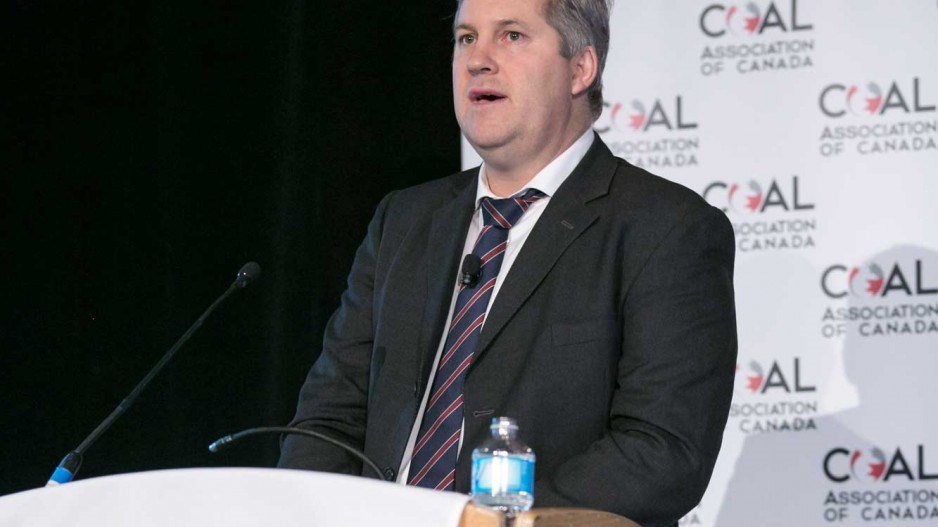One year ago, the annual Coal Association of Canada conference in Vancouver opened on the same day that Anglo American PLC announced plans to close another coal mine in B.C.
Four B.C. metallurgical (“met”) coal mines have been shuttered, resulting in a 41% reduction in shipments through Ridley Terminals in 2014, according to a 2014 annual report.
The drop – to just 6.9 tonnes in 2014 from 11.7 tonnes in 2013 – cut the terminal’s net profits to $18 million in 2014 from $43 million in 2013, a 57% decline.
On the exploration and development front, the B.C. government delivered a fatal blow to plans by Fortune Minerals Ltd. (TSX:FT) to develop a new anthracite coal mine in the Mount Klappan area when it rescinded 61 coal licences last May.
That decision was based on Tahltan First Nation opposition to a coal mine being built at the confluence of three major salmon-bearing rivers in what the Tahltan call the Sacred Headwaters.
So British Columbians might well wonder why a businessman in Stewart is sinking millions into a new port terminal, while an Australian junior miner is planning to build a new $600 million anthracite coal mine just 80 kilometres south of the proposed Arctos anthracite mine that Fortune Minerals was forced to shelve.
At this year’s coal conference, held September 16 to 18, Atrum Coal NL (ASX:ATU) announced it has signed a memorandum of understanding with the new Stewart World Port for future shipments of five million tonnes of coal per year.
Although Stewart is only 150 kilometres from the mine site, there is no rail or highway access between the two. The long-range plan, therefore, is to build a rail link to transport coal by rail and truck to Stewart’s port.
To date, Atrum has spent $40 million getting its Groundhog underground coal mine close to the bulk sample permit stage.
There is still a glut of metallurgical coal, which is used to make steel. Per-tonne prices have dropped to US$90 from US$300 in 2011.
Joe Aldina, Wood Mackenzie’s coal expert, said the met coal glut is being exacerbated by declining demand, primarily from China.
He’s now projecting that it will take until 2020 for markets to balance.
Anthracite, valued in steelmaking for its high-carbon, low-impurity content, is in shorter supply than regular met coal, due in part to civil unrest in Ukraine that has disrupted supplies.
At between US$150 and US$175 per tonne, anthracite coal is currently twice the price of other met coals.
Unlike the Arctos anthracite project, Atrum’s plan appears to have the support of key First Nations.
One big difference is the location: it’s 80 kilometres south of the Sacred Headwaters. Moreover, it’s an underground mine, not an open-pit mine, and Atrum appears to understand the importance of getting buy-in early on from First Nations, notably the Gitxsan and Tahltan.
“One of the first things we did was make a substantial loan to the corporation that Gitxsan have to set them up to service us,” Peter Doyle, Atrum’s vice-president of marketing and business development, told the coal association conference September 18.
Aldina said the permitting process for a new mine is so long that by the time the Groundhog project goes into production, the supply-demand issues will likely be balanced out.
“Met coal is cyclical, and Canada continues to be an attractive place to invest for the long term for when the market does turn around,” he said. “I think it makes sense to do certain development work. It makes sense to move forward with things because permitting takes time. We can’t exactly call a recovery, so it makes sense to move now.”
As for existing met coal mines, only five of nine metallurgical coal mines in B.C. that were recently in operation are still producing. All belong to Teck Resources (TSX:TCK.B), which has managed to stay afloat by cutting operating costs by 21%. Some of those savings are from a low Canadian dollar, said Real Foley, Teck’s vice-president of coal marketing.
Bringing supply into balance with demand will require 45 million tonnes of met coal coming off the market, he said. About half of that has been accomplished to date.
With demand from China slowing, miners are hoping India will pick up some of the falling demand in the coming years.
“Some supply still needs to be rationalized, and then everybody’s waiting with bated breath to see what India does,” Aldina said. “We’re positive on India, but we’re also cautious at the moment to see how reforms go and how much coal they can import.”
Steelmaking coal is B.C.’s second-largest export. In 2011, it accounted for $7.1 billion in export sales – 22% of the total exports from B.C.




